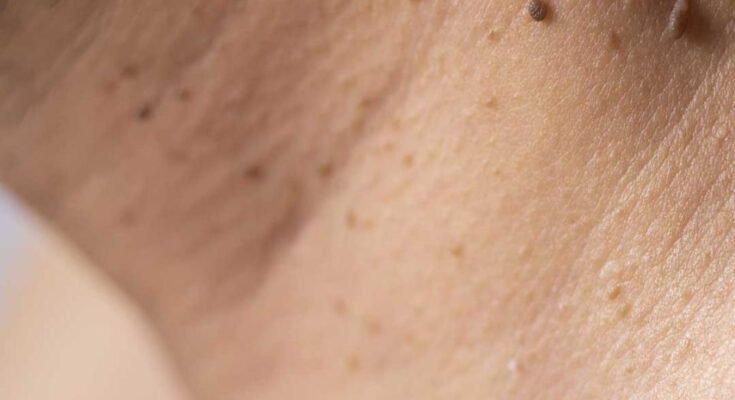Skin tags, medically known as acrochordons, are small, benign growths that often appear on the skin’s surface. They are typically flesh-colored or slightly darker and have a soft, smooth texture. While skin tags are generally harmless, they can be a cosmetic concern for many people, especially when they appear in visible areas such as the neck. Understanding what skin tags are and how they form can help in managing them effectively.
Understanding the Causes of Skin Tags
Skin tags develop when clusters of collagen and blood vessels become trapped inside thicker pieces of skin. They are more common in areas where skin rubs against skin or clothing, such as the neck, armpits, and groin. Factors that may contribute to the formation of skin tags include genetics, obesity, hormonal changes, and certain medical conditions like diabetes. While anyone can develop skin tags, they are more prevalent in middle-aged adults and the elderly.
Identifying Skin Tags on the Neck
Identifying skin tags is relatively straightforward. They are small, soft, and often hang off the skin by a thin stalk. On the neck, skin tags can vary in size from a few millimeters to a couple of centimeters. They are usually painless but can become irritated if caught on clothing or jewelry. It’s important to differentiate skin tags from other skin conditions, such as warts or moles, which may require different treatments.
When to Consult a Doctor
While skin tags are benign and typically do not require medical treatment, there are situations where consulting a doctor is advisable. If a skin tag changes color, grows rapidly, bleeds, or causes significant discomfort, it is important to seek medical advice to rule out other skin conditions. Additionally, if you are unsure whether a growth is a skin tag or something else, a healthcare professional can provide a proper diagnosis.
Safe Home Remedies for Skin Tag Removal
Several home remedies can be used to safely remove skin tags. One popular method is tying a piece of dental floss or thread around the base of the tag to cut off its blood supply, causing it to fall off after a few days. Another approach is applying apple cider vinegar or tea tree oil to the tag daily, which may help dry it out and cause it to detach. It is crucial to ensure that these methods are performed with clean tools and hands to prevent infection.
Over-the-Counter Treatments for Skin Tags
There are various over-the-counter products available for skin tag removal. These include topical creams, ointments, and freezing kits similar to those used for wart removal. These treatments work by gradually breaking down the tissue of the skin tag or freezing it off. It is important to follow the instructions carefully and avoid using these products on sensitive areas or if you have any skin allergies.
Precautions and Safety Tips
When attempting to remove skin tags at home, it is essential to take precautions to avoid complications. Ensure that any tools used are sterilized, and avoid cutting or clipping skin tags, as this can lead to bleeding and infection. If a skin tag is located in a sensitive area or if you have underlying health conditions, it is best to consult with a healthcare provider before attempting removal.
Alternative Treatments and Natural Remedies
In addition to conventional home remedies, some people explore alternative treatments for skin tag removal. Essential oils like oregano or frankincense, known for their anti-inflammatory properties, may be applied to the skin tag. Additionally, some people use a paste made from baking soda and castor oil as a natural remedy. While these methods are generally considered safe, their effectiveness can vary, and it is important to monitor the skin for any adverse reactions.
Preventing Skin Tags in the Future
While it is not always possible to prevent skin tags, certain lifestyle changes may reduce their occurrence. Maintaining a healthy weight can minimize skin friction, and wearing loose-fitting clothing can help prevent irritation. Keeping the skin clean and dry, especially in areas prone to friction, may also be beneficial. Regular skin checks can help detect any new skin tags early, allowing for prompt management.
Conclusion and Final Thoughts
Skin tags are a common and benign skin condition that can be managed with various home remedies and over-the-counter treatments. While they are not usually a cause for concern, it is important to monitor them for any changes and consult a healthcare professional if necessary. By understanding the causes and prevention strategies, individuals can effectively manage skin tags and maintain healthy skin.



